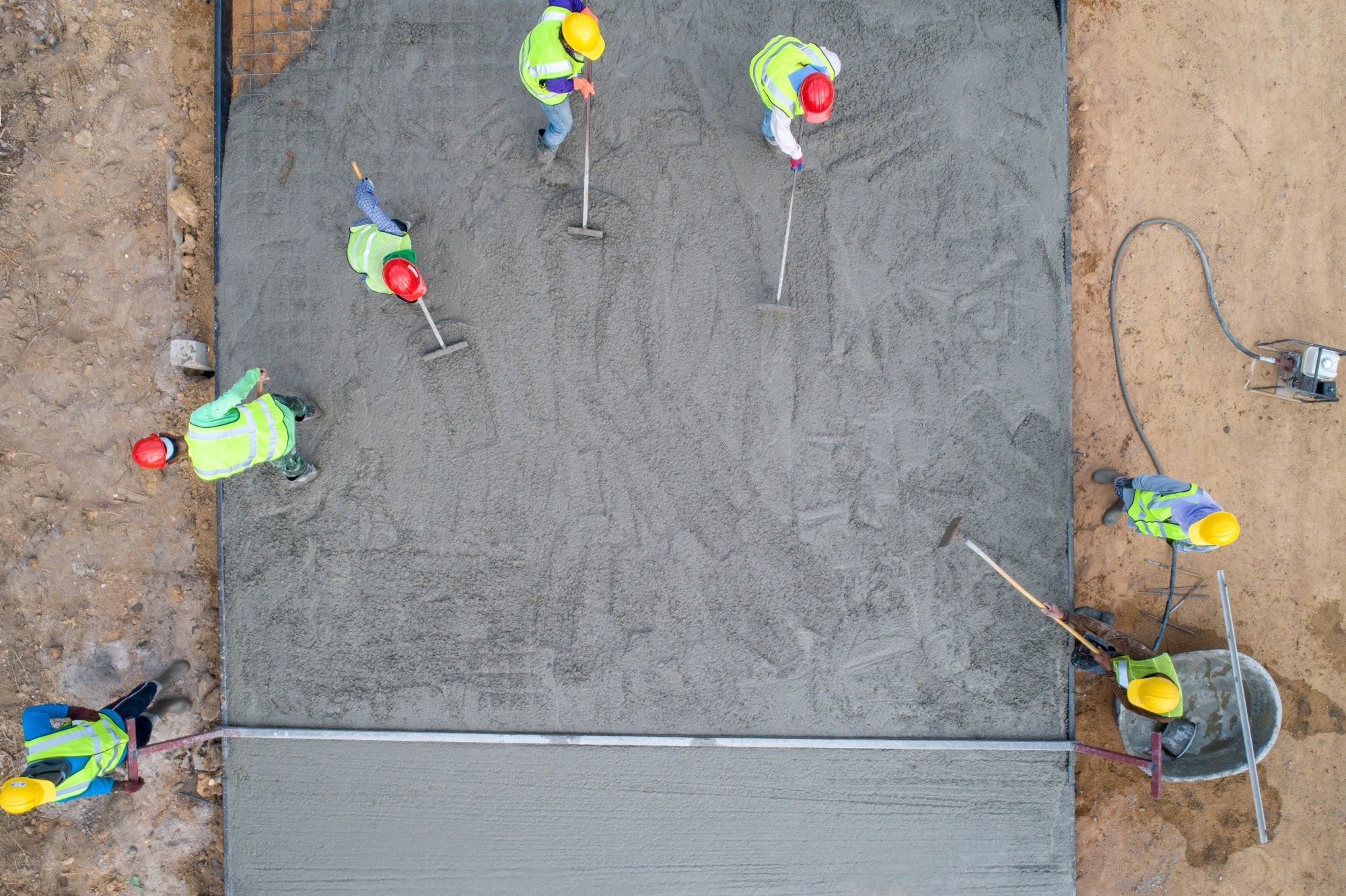Researchers have boosted concrete strength by nearly 60 % using a mix of graphene oxide and steel fibers. This could be a non-destructive way to improve durability in modern construction.

Image Credit: /Shutterstock.com
A recent study published in Nano Express investigated the effect of combining graphene oxide with micro-steel fibers (SF) on concrete's mechanical performance. The study also examined how non-destructive ultrasonic pulse velocity (UPV) testing could reliably predict the strength and internal quality of the concrete.
The approach treats graphene oxide not just as a passive filler, but as an active additive with the potential to improve concrete's structural health and long-term durability.
Graphene Oxide and Micro-Steel Fibers
Graphene oxide stands out in material development due to its large surface area and strong chemical reactivity. This makes it a useful nucleation site for hydration products during cement setting, and helps to refine the microstructure of concrete, sealing pores and increasing strength.
Graphene oxide has been shown to enhance tensile and compressive strength of concrete even in small amounts, by accelerating hydration and reducing porosity. Steel fibers, meanwhile, are already widely used to improve fracture resistance, toughness, and crack control in concrete.
Graphene oxide improves hydration and matrix density, and SF provides mechanical reinforcement. This study shows how their dual integration dramatically improves concrete strength.
The Experimental Setup
To test their effects, the team prepared multiple concrete and mortar mixes with different proportions of graphene oxide (0.02 % to 0.08 %) and micro-steel fibers (0.3 % to 0.8 %). Graphene oxide was synthesized in-house using the Modified Hummers Method, producing a highly oxidized and water-dispersible form of graphene ideal for cement integration.
Graphene oxide dispersions were mixed with cement and superplasticizers to ensure even distribution. Standardised procedures (IS 10262:2019) guided the mix design and specimen preparation. Concrete samples included 100 mm cubes and 100 × 200 mm cylinders, all cured under controlled conditions.
The resulting mechanical strength was assessed through compressive and split tensile tests. Non-destructive UPV tests were conducted to evaluate internal homogeneity and quality, while microstructural analysis was carried out using Field Emission Scanning Electron Microscopy (FE-SEM) and Micro-Computed Tomography (Micro-CT).
What the Results Showed
The standout formulation, 0.06 % graphene oxide (GO) combined with 0.5 % SF, showed almost a 60 % increase in compressive strength over the control samples. Researchers attribute this improvement to two main effects: GO's ability to densify the cement matrix by promoting hydration and sealing pores, and SF’s capacity to bridge cracks and enhance toughness.
The graphene oxide also seemed to delay crack initiation and growth, enabling a more ductile failure mode with finer, distributed cracking, ideal for structural applications that demand load resilience.
UPV tests backed up the mechanical findings. Pulse velocity strongly correlated with compressive strength (R2 ≈ 0.97), especially in GO-SF hybrid mixes, highlighting UPV’s reliability as a non-invasive quality indicator.
Download your PDF copy now!
A Closer Look at the Microstructure
FE-SEM and Micro-CT imaging confirmed that samples containing both GO and SF had fewer voids and denser hydration product distribution. Graphene oxide appeared to act as a catalyst for hydration reactions, while steel fibers helped manage internal stresses, limiting crack growth.
The result is a well-integrated composite material with enhanced durability, strength, and long-term performance, making it a strong candidate for advanced construction needs.
Looking Ahead
The research illustrates the value of combining nanomaterials with conventional reinforcement strategies to create concrete that’s not only stronger but smarter. By enhancing both microstructure and macro-scale behavior, this hybrid approach could help meet the growing demand for high-performance, durable infrastructure.
Journal Reference
Samraj R., & Pannem, R. M. R. (2025). Incorporation of 2D nanomaterial - Graphene Oxide (GO) in fibre reinforced cementitious composites: impact on hydration, mechanical and microstructure characteristics. Nano Express, 6, 035008. DOI: 10.1088/2632-959X/adef1d, https://iopscience.iop.org/article/10.1088/2632-959X/adef1d